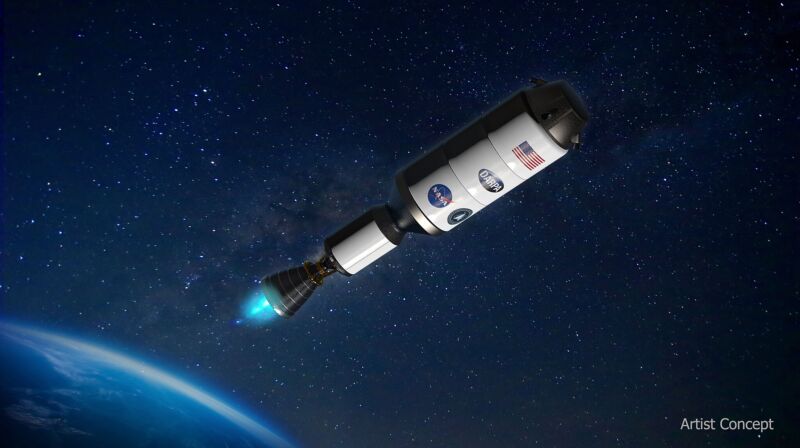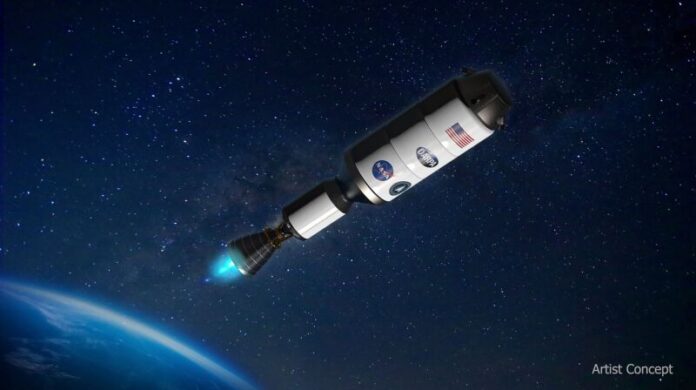
Enlarge / Artist concept of the Demonstration for Rocket to Agile Cislunar Operations (DRACO) spacecraft. (credit: DARPA)
Phoebus 2A, the most powerful space nuclear reactor ever made, was fired up at Nevada Test Site on June 26, 1968. The test lasted 750 seconds and confirmed it could carry first humans to Mars. But Phoebus 2A did not take anyone to Mars. It was too large, it cost too much, and it didn’t mesh with Nixon’s idea that we had no business going anywhere further than low-Earth orbit.
But it wasn’t NASA that first called for rockets with nuclear engines. It was the military that wanted to use them for intercontinental ballistic missiles. And now, the military wants them again.
Nuclear-powered ICBMs
The work on nuclear thermal rockets (NTRs) started with the Rover program initiated by the US Air Force in the mid-1950s. The concept was simple on paper. Take tanks of liquid hydrogen and use turbopumps to feed this hydrogen through a nuclear reactor core to heat it up to very high temperatures and expel it through the nozzle to generate thrust. Instead of causing the gas to heat and expand by burning it in a combustion chamber, the gas was heated by coming into contact with a nuclear reactor.
Read 56 remaining paragraphs | Comments
Ars Technica - All contentContinue reading/original-link]




